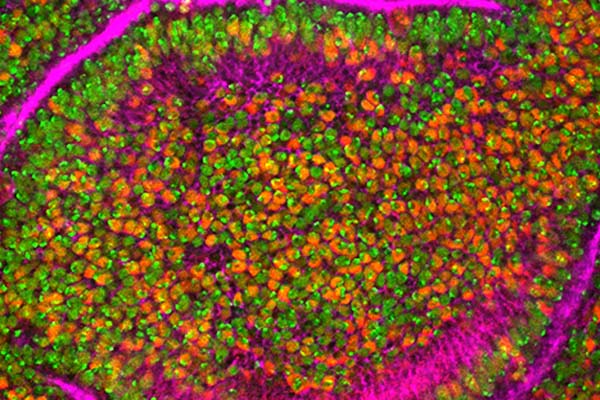Nazi Germany was one of the culprits of the Second World War, which left a scar in human history. After the defeat in World War I, Nazi Germany succeeded in inciting Germans, who are known for their sensibility, to launch the Second World War. This was closely related to the prevailing of Nazi mythology in the country. The early 20th century was at the peak of the wave of Western political democratization.
Democratization advocates the elimination of the old political authority based on inheritance, divinity, and God’s will, so that the source of legitimacy shifted. One of its major results is that the masses have reached the forefront of the historical arena and have become an important source of legitimacy for modern political authority. To wage another world war, understanding the masses and mastering the power of them has become a historic necessity. Apparently, Hitler and Nazi mythology successfully mastered the power of the masses through the creation of an idol, an enemy, and theatrical stage on the national scale.
In a country under dictatorship, shaping and deifying the image of the head of state is an important way to achieve personal worship. In the Nazi political communication activities, the propaganda elites were painstakingly involved in shaping the image of Hitler. They almost integrated all available media and means, and constantly elevated the image of Hitler to the extent of a religion. Under the Nazi propaganda system, the mass media published photos and reports of Hitler waving to the assembly crowd, personally inspecting the infrastructure project, meeting the ordinary folks, and greeting the army and other people (Clark, 1997). In addition, in the propaganda movies and “documentaries” a divine yet approachable image of Hitler is also depicted (Clark, 1997).
These measures created an idol who is close to the people and understand the hardships of them. Hitler was portrayed as a prophet that helped pointed out the existential threat for the German people, as if following him would avoid doom (O’ Shaughnessy, 2016). Accompanying the idol are the grand structures built in celebration of it. Nazi mythology used architecture as a means of propaganda, as “the massive restructuring of Berlin and other large-scale construction projects were ordered by Hitler to reflect his ‘Thousand Year Reich’” (Jowett, & O’Donnell, 2018). Through the creation of its own god and speaker in one figure, persuasion on the national scale becomes much easier.
Another important element in Nazi mythology is the creation of symbols, which helped increase the sense of identity and loyalty. A well-designed symbol can be very influential because it creates a strong visual and psychological impact. The infamous Nazi symbols include “the eagle, the Nazi “martyr’s” blood, marching (especially the goose step), the Heil salute, the carrying of swords and daggers, the use of fire, the swastika, and the flag” (Jowett, & O’Donnell, 2018). The symbols of the Nazis, ranging from figurative to abstract, from macro to detail, was all over the country.
The swastika is one of the most impactful Nazi symbols created. The three colors are red, white and black from the outside to the inside. From the perspective of color, red symbolizes life, vitality, anger and conflict. It is the most eye-catching, giving a visual sense of imminence and expansion, which is easy to trigger excitement, fear, and nervousness. Black is a mysterious color, a symbol of seriousness, solemnity, perseverance, and horror. Black can be combined with any color, and it works the best with red. White symbolizes purity, sacredness, and kindness. In the light and dark levels, white is the brightest, contrasting with black, forming a strong visual impact. The visually impactful symbols penetrated the ordinary German lives. They became so visually dominant that ignoring or opposing them was no longer an option.
In addition to the creation of an idol and symbols, Nazi mythology also created a common threatening enemy to motivate the people, which brought devastation to the Jewish population in Europe. In the Nazi race theory, Jews are regarded as inferior nations, the disease of modern civilization, and should be eliminated and go extinct. The Nazis also demanded that the Jews be solely responsible for the defeat of Germany in 1918 and its consequences. Basically, Nazi mythology used Jews to justify and explain what happened to the entire country, which was just absurd. However, just like the case of symbols, the power of simplicity prevailed once more. The narrative of a common evil race was so simple yet compelling that Nazi mythology managed to sell it to the people.
When anti-Semitism gradually became the norm, Nazi mythology took a step further to expand the hatred in the global scale: the ultimate enemy became the “master” of plutocracy & Bolshevism: the Jews (O’ Shaughnessy, 2016). In the view of the Nazi Party, the worst of the Jewish roots were democracy, Marxism, and the Soviet state. Such a nationalist resentment embodies the idea of projection in psychology. Instead of thinking economy in economic terms, and think history in historical terms, people began blaming the Jews for everything simply because it was a much more convenient alternative offered by Nazi mythology. As a result, frustrations over the self and the society was successfully transformed into racial hatred and violence.
The construction of the idol, the symbols, and the common enemy was not accomplished overnight. Instead, it was a cumulative progress. As the face and the speaker of Nazis, Hitler’s theatrical st

